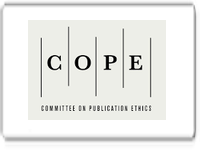Acumulación ectópica de grasa y su influencia en la secreción de insulina: el papel del estrés del retículo endoplasmático
DOI:
https://doi.org/10.56048/MQR20225.8.1.2024.1343-1359Palabras clave:
grasa ectópica; obesidad; resistencia a la insulinaResumen
Introducción: estudio sobre el aumento mundial de obesidad y diabetes tipo 2, enfocado en cómo la grasa abdominal afecta la insulina y las células beta pancreáticas, con énfasis en la dieta y estilo de vida. Objetivo: analizar la relación entre la grasa ectópica y trastornos metabólicos como la diabetes tipo 2, y su conexión con factores dietéticos y de estilo de vida. Metodología: combinación de análisis de datos epidemiológicos, revisión de literatura científica y estudios de caso para explorar la interacción entre grasa, insulina y células beta. Resultados: identificación de cómo la grasa ectópica contribuye a trastornos metabólicos, con especial atención a la función de proteínas específicas y el impacto en células beta y la insulina. Conclusión: el estudio concluye que los trastornos metabólicos asociados a la obesidad y resistencia a la insulina son el resultado de una interacción compleja de factores biológicos, genéticos y ambientales. Destaca la necesidad de enfocar en la dieta y el estilo de vida para el manejo y prevención de estos trastornos, teniendo en cuenta sus impactos físicos, psicológicos y sociales. Área de estudio general: medicina. Área de estudio específica: medicina general. Tipo de estudio: Revisión bibliográfica.
Descargas
Métricas
Cited
DOI: 10.56048![]()
Citas
Guzmán-Ruiz, R., Tercero-Alcázar, C., López-Alcalá, J., Sánchez-Ceinos, J., Malagón, M., y Gordon, A. (2021). The potential role of the adipokine HMGB1 in obesity and insulin resistance. Novel effects on adipose tissue biology. Molecular and Cellular Endocrinology, 536, 111417.
Fazakerley, D., Krycer, J., Kearney, A., Hocking, S., y James, D. (2019). Muscle and adipose tissue insulin resistance: malady without mechanism? Journal of Lipid Research, 60(10), 1720-1732.
Neeland, I., Ross, R., Després, J., Matsuzawa, Y., Yamashita, S., Shai, I., et al. (2019). Visceral and ectopic fat, atherosclerosis, and cardiometabolic disease: a position statement. The Lancet Diabetes & Endocrinology, 7(9), 715-725.
Maffeis, C., y Morandi, A. (2018). Body composition and insulin resistance in children. European Journal of Clinical Nutrition, 72(9), 1239-1245.
Barter, P., Carroll, K., y Nestel, P. (1971). Diurnal fluctuations in triglyceride, free fatty acids, and insulin during sucrose consumption and insulin infusion in man. Journal of Clinical Investigation, 50(3), 583-591.
Zhang, Q., Kong, X., Yuan, H., Guan, H., Li, Y., y Niu, Y. (2019). Mangiferin Improved Palmitate-Induced-Insulin Resistance by Promoting Free Fatty Acid Metabolism in HepG2 and C2C12 Cells via PPARα: Mangiferin Improved Insulin Resistance. Journal of Diabetes Research, 2019, 2052675.
Hirano, T. (2018). Pathophysiology of Diabetic Dyslipidemia. Journal of Atherosclerosis and Thrombosis, 25(9), 771-782.
Song, Y., Zan, W., Qin, L., Han, S., Ye, L., Wang, M., et al. (2022). Ablation of ORMDL3 impairs adipose tissue thermogenesis and insulin sensitivity by increasing ceramide generation. Molecular Metabolism, 56, 101423.
Marcadenti, A., y de Abreu-Silva, E. (2015). Different adipose tissue depots: Metabolic implications and effects of surgical removal. Endocrinología y Nutrición, 62(9), 458-464.
Snel, M., Jonker, J., Schoones, J., Lamb, H., de Roos, A., Pijl, H., et al. (2012). Ectopic fat and insulin resistance: pathophysiology and effect of diet and lifestyle interventions. International Journal of Endocrinology, 2012, 983814.
Yi, X., Liu, Y., Zhou, X., Wang, Y., Deng, J., Liu, J., et al. (2018). The Influence of Abdominal and Ectopic Fat Accumulation on Carotid Intima-Media Thickness: A Chongqing Study. Journal of Stroke and Cerebrovascular Diseases, 27(7), 1992-1997.
Zhang, J., Shi, Y., Yang, C., Sun, B., Ma, H., Huang, R., et al. (2021). Adipocyte-specific deletion of Depdc5 exacerbates insulin resistance and adipose tissue inflammation in mice. Biochemical and Biophysical Research Communications, 569, 118-124.
Martos-Moreno, G., Kopchick, J., y Argente, J. (2013). Adipoquinas en el niño sano y con obesidad. Anales de Pediatría, 78(3), 189.e1-189.e15.
Shankar, K., Kumar, D., Gupta, S., Varshney, S., Rajan, S., Srivastava, A., et al. (2019). Role of brown adipose tissue in modulating adipose tissue inflammation and insulin resistance in high-fat diet fed mice. European Journal of Pharmacology, 854, 354-364.
Pantoja-Torres, B., Toro-Huamanchumo, C., Urrunaga-Pastor, D., Guarnizo-Poma, M., Lazaro-Alcantara, H., Paico-Palacios, S., et al. (2019). High triglycerides to HDL-cholesterol ratio is associated with insulin resistance in normal-weight healthy adults. Diabetes Metabolic Syndrome and Clinical Research Reviews, 13(1), 382-388.
Zheng, F., y Cai, Y. (2019). Concurrent exercise improves insulin resistance and nonalcoholic fatty liver disease by upregulating PPAR-γ, and genes involved in the beta-oxidation of fatty acids in ApoE-KO mice fed a high-fat diet. Lipids in Health and Disease, 18(1), 6. http://dx.doi.org/10.1186/s12944-018-0947-1
Knebel, B., Müller-Wieland, D., y Kotzka, J. (2020). Lipodystrophies—Disorders of the fatty tissue. International Journal of Molecular Sciences, 21(22), 8778. http://dx.doi.org/10.3390/ijms21228778
Santos, J, y Cortés, V. (2021). Eating behaviour in contrasting adiposity phenotypes: Monogenic obesity and congenital generalized lipodystrophy. Obesity Reviews, 22(1), e13114. http://dx.doi.org/10.1111/obr.13114
Fernández, M., Basurto, L., Córdova, N., Vázquez, A., Tepach, N., Vega, S., et al. (2014). Epicardial adipose tissue is associated with visceral fat, metabolic syndrome, and insulin resistance in menopausal women. Revista Española de Cardiología (English Edition), 67(6), 436-441. http://dx.doi.org/10.1016/j.rec.2013.09.020
Basurto, L., Barrera, S., Fernández, M., Saucedo, R., Rodríguez, A., y Martínez, C. (2018). El incremento de la grasa epicárdica en mujeres se asocia a riesgo trombótico. Clínica e Investigación en Arteriosclerosis, 30(3), 112-117. http://dx.doi.org/10.1016/j.arteri.2017.11.002
Wang, L., Liu, Y., Hu, F., y Zhou, Z. (2022). Los posibles mecanismos de pardeamiento del tejido adiposo blanco: una diana novedosa para el tratamiento de la obesidad. Nutrición Hospitalaria. http://dx.doi.org/10.20960/nh.03647
Frigolet, M., y Gutiérrez-Aguilar, R. (2020). The colors of adipose tissue. Gaceta Médica de México, 156(2), 142–149. http://dx.doi.org/10.24875/GMM.M20000356
Lempesis, I., Van-Meijel, R., Manolopoulos, K., Y Goossens, G. (2020). Oxygenation of adipose tissue: A human perspective. Acta Physiologica, 228(1), e13298. http://dx.doi.org/10.1111/apha.13298
Kawai, T., Autieri, M., Y Scalia, R. (2021). Adipose tissue inflammation and metabolic dysfunction in obesity. American Journal of Physiology-Cell Physiology, 320(3), C375-C391. http://dx.doi.org/10.1152/ajpcell.00379.2020
Lee, Y., Li, P., Huh, J., Hwang, I., Lu, M., Kim, J., et al. (2011). Inflammation is necessary for long-term but not short-term high-fat diet-induced insulin resistance. Diabetes, 60(10), 2474-2483. http://dx.doi.org/10.2337/db11-0194
Kahn, C., Wang, G., Y Lee, K. (2019). Altered adipose tissue and adipocyte function in the pathogenesis of metabolic syndrome. Journal of Clinical Investigation, 129(10), 3990-4000. http://dx.doi.org/10.1172/JCI129187
Aldiss, P., Betts, J., Sale, C., Pope, M., Budge, H., Y Symonds, M. (2018). Exercise-induced ‘browning’ of adipose tissues. Metabolism, 81, 63–70. http://dx.doi.org/10.1016/j.metabol.2017.11.009
Vega, G., Y Rico, M. (2019). Adipose tissue: immune function and alterations caused by obesity. Revista Alergia México, 66(3), 340-353. http://dx.doi.org/10.29262/ram.v66i3.603
Brocco, D., Florio, R., De Lellis, L., Veschi, S., Grassadonia, A., Tinari, N., et al. (2020). The role of dysfunctional adipose tissue in pancreatic cancer: A molecular perspective. Cancers, 12(7), 1849. http://dx.doi.org/10.3390/cancers12071849
Chang, M. (2022). Fatty pancreas-centered metabolic basis of pancreatic adenocarcinoma: From obesity, diabetes, and pancreatitis to oncogenesis. Biomedicines, 10(3), 692. http://dx.doi.org/10.3390/biomedicines10030692
Trefts, E., Gannon, M., Y Wasserman, D. (2017). The liver. Current Biology, 27(21), R1147-R1151. https://doi.org/10.1016/j.cub.2017.09.019
Chadt, A., Y Al-Hasani, H. (2020). Glucose transporters in adipose tissue, liver, and skeletal muscle in metabolic health and disease. Pflügers Archiv - European Journal of Physiology, 472(9), 1273-1298. http://dx.doi.org/10.1007/s00424-020-02417-x
Da-Silva, S., Nayak, N., Caymo, A., Y Gordon, J. (2020). Mechanisms of muscle insulin resistance and the cross-talk with liver and adipose tissue. Physiological Reports, 8(19), e14607. https://doi.org/10.14814/phy2.14607
Longo, M., Zatterale, F., Naderi, J., Parrillo, L., Formisano, P., Raciti, G., et al. (2019). Adipose tissue dysfunction as determinant of obesity-associated metabolic complications. International Journal of Molecular Sciences, 20(9), 2358. http://dx.doi.org/10.3390/ijms20092358
Angelidi, A., Filippaios, A., Y Mantzoros, C. (2021). Severe insulin resistance syndromes. Journal of Clinical Investigation, 131(4). http://dx.doi.org/10.1172/JCI142245
Dite, P., Blaho, M., Bojkova, M., Jabandziev, P., Kunovsky, L. (2020). Nonalcoholic fatty pancreas disease: Clinical consequences. Digestive Diseases, 38(2), 143-149. http://dx.doi.org/10.1159/000505366
Joshi, S., Pendyala, G., Shah, P., Pustake, B., Mopagar, V., Padmawar, N. (2021). Severe insulin resistance syndrome - A rare case report and review of literature. National Journal of Maxillofacial Surgery, 12(1), 100–105. http://dx.doi.org/10.4103/njms.NJMS_55_20
Gosavi, S., Sangamesh, S., Ananda Rao, A., Patel, S., Hodigere, V. (2021). Insulin, insulin everywhere: A rare case report of Rabson-Mendenhall syndrome. Cureus, 13(2), e13126. http://dx.doi.org/10.7759/cureus.13126
Wang, X., Rao, H., Liu, F., Wei, L., Li, H., Wu, C. (2021). Recent advances in adipose tissue dysfunction and its role in the pathogenesis of non-alcoholic fatty liver disease. Cells, 10(12), 3300. http://dx.doi.org/10.3390/cells10123300
Silva, L., Fernandes, M., Lima, E., Stefano, J., Oliveira, C., Jukemura, J. (2021). Fatty pancreas: Disease or finding? Clinics, 76, e2439. http://dx.doi.org/10.6061/clinics/2021/e2439
Maurice, J., Manousou, P. (2018). Non-alcoholic fatty liver disease. Clinical Medicine, 18(3), 245-250. http://dx.doi.org/10.7861/clinmedicine.18-3-245
Yang, A., Mottillo, E. (2020). Adipocyte lipolysis: from molecular mechanisms of regulation to disease and therapeutics. Biochemical Journal, 477(5), 985-1008. http://dx.doi.org/10.1042/BCJ20190468
Vishvanath, L., Y Gupta, R. (2019). Contribution of adipogenesis to healthy adipose tissue expansion in obesity. Journal of Clinical Investigation, 129(10), 4022-4031. http://dx.doi.org/10.1172/jci129191
Tandon, P., Wafer, R., y Minchin, J. (2018). Adipose morphology and metabolic disease. Journal of Experimental Biology, 221(Pt Suppl 1), jeb164970. http://dx.doi.org/10.1242/jeb.164970
Suárez, W., Sánchez, A., y González, J. (2017). Fisiopatología de la obesidad: Perspectiva actual. Revista Chilena de Nutrición, 44(3), 226-233. http://dx.doi.org/10.4067/s0717-75182017000300226
Ahmed, B., Sultana, R., y Greene, M. (2021). Adipose tissue and insulin resistance in obese. Biomedicine & Pharmacotherapy, 137, 111315. http://dx.doi.org/10.1016/j.biopha.2021.111315
Chait, A., y den-Hartigh, L. (2020). Adipose tissue distribution, inflammation, and its metabolic consequences, including diabetes and cardiovascular disease. Frontiers in Cardiovascular Medicine, 7, 22. http://dx.doi.org/10.3389/fcvm.2020.00022
Trouwborst, I., Bowser, S., Goossens, G., y Blaak, E. (2018). Ectopic fat accumulation in distinct insulin resistant phenotypes; Targets for personalized nutritional interventions. Frontiers in Nutrition, 5, 77. http://dx.doi.org/10.3389/fnut.2018.00077
Rahman, M., Hossain, K., Das, S., Kundu, S., Adegoke, E., Rahman, M., et al. (2021). Role of insulin in health and disease: An update. International Journal of Molecular Sciences, 22(12), 6403. http://dx.doi.org/10.3390/ijms22126403
Pereira, S., Cline, D., Glavas, M., Covey, S., y Kieffer, T. (2021). Tissue-specific effects of Leptin on glucose and lipid metabolism. Endocrine Reviews, 42(1), 1-28. http://dx.doi.org/10.1210/endrev/bnaa027
Kimura, I., Ichimura, A., Ohue-Kitano, R., y Igarashi, M. (2020). Free fatty acid receptors in health and disease. Physiological Reviews, 100(1), 171-210. http://dx.doi.org/10.1152/physrev.00041.2018
Ghosh, A., Gao, L., Thakur, A., Siu, P., y Lai, C. (2017). Role of free fatty acids in endothelial dysfunction. Journal of Biomedical Science, 24(1). http://dx.doi.org/10.1186/s12929-017-0357-5
Publicado
Cómo citar
Número
Sección
Categorías
Licencia

Esta obra está bajo una licencia internacional Creative Commons Atribución 4.0.
Los autores se comprometen a respetar la información académica de otros autores, y a ceder los derechos de autor a la Revista MQRInvestigar, para que el artículo pueda ser editado, publicado y distribuido. El contenido de los artículos científicos y de las publicaciones que aparecen en la revista es responsabilidad exclusiva de sus autores. La distribución de los artículos publicados se realiza bajo una licencia 
































































































